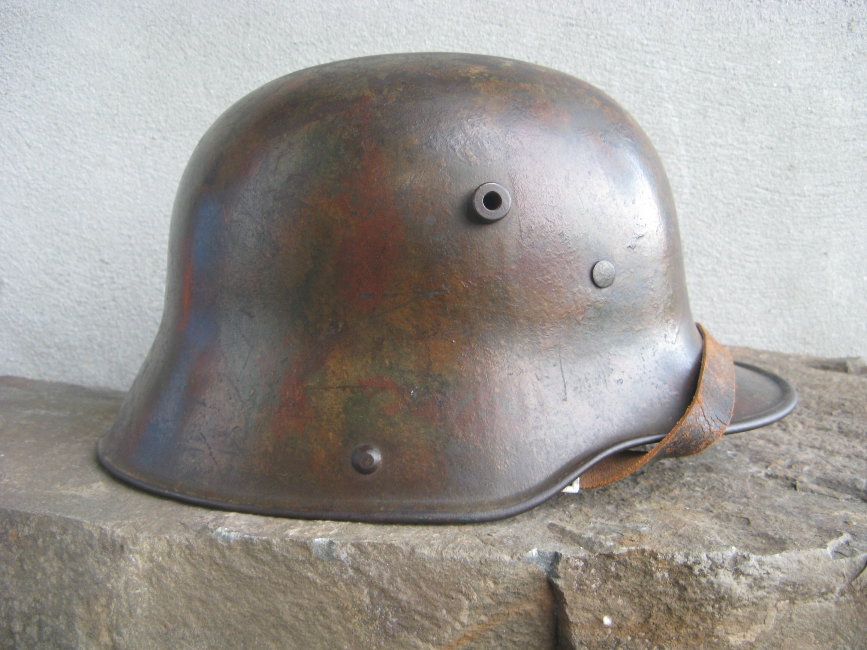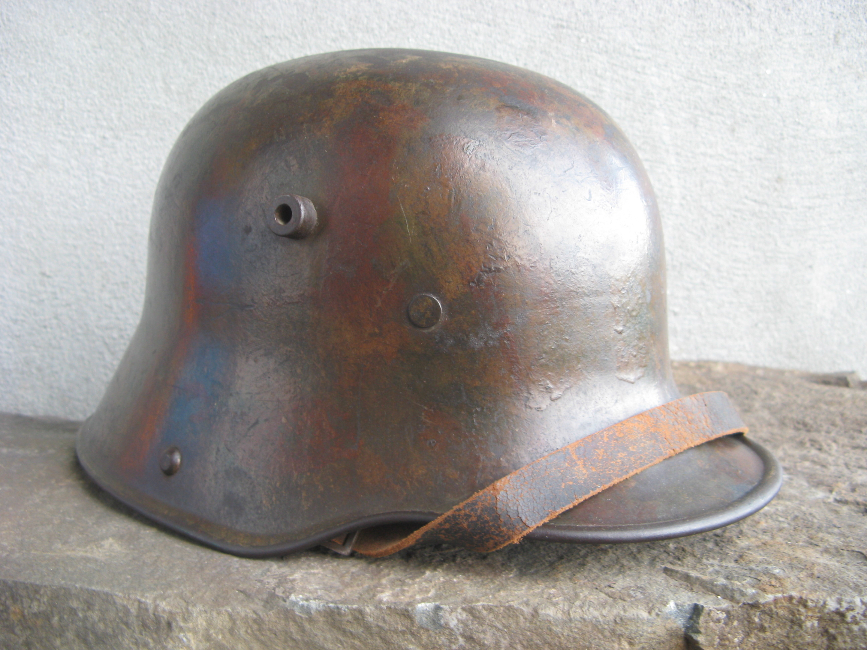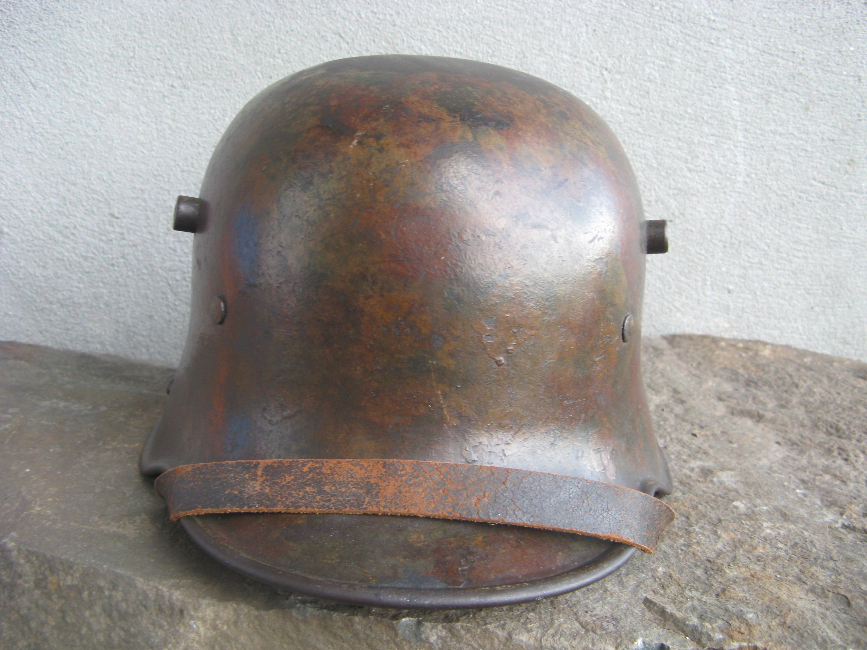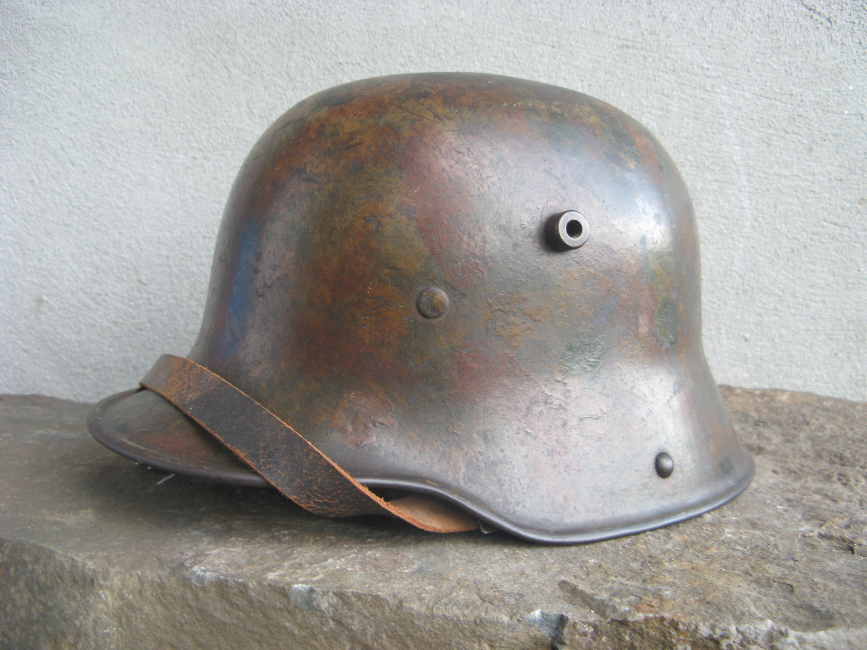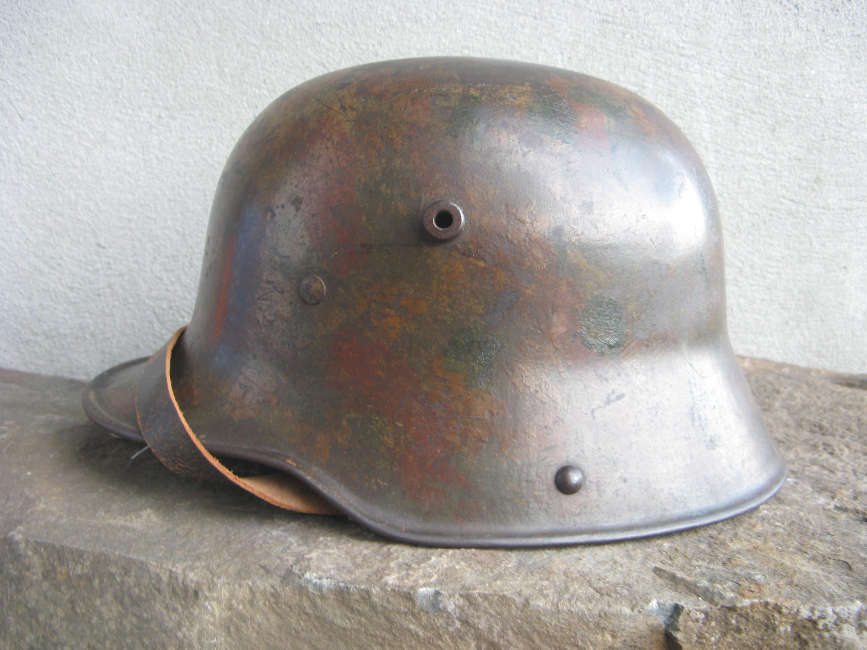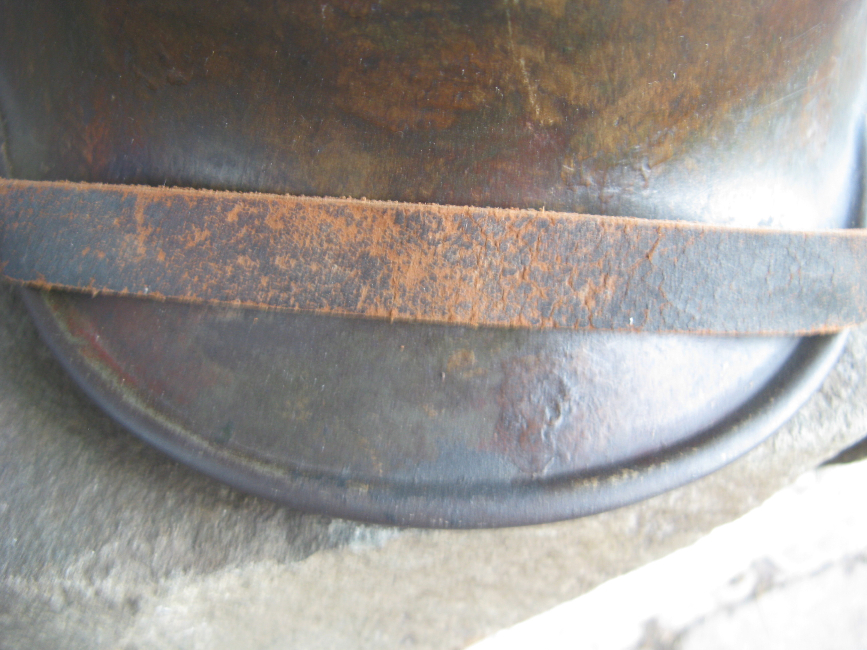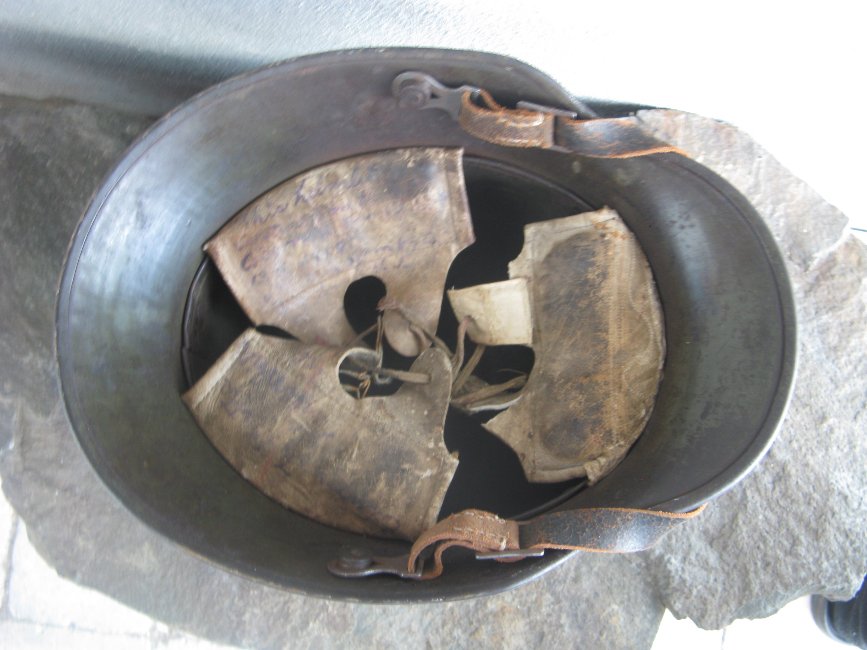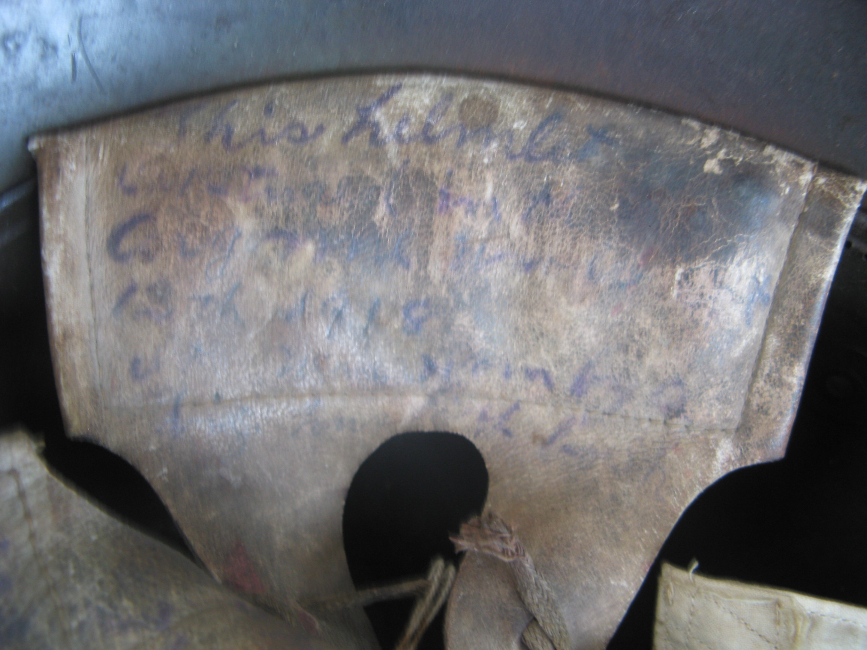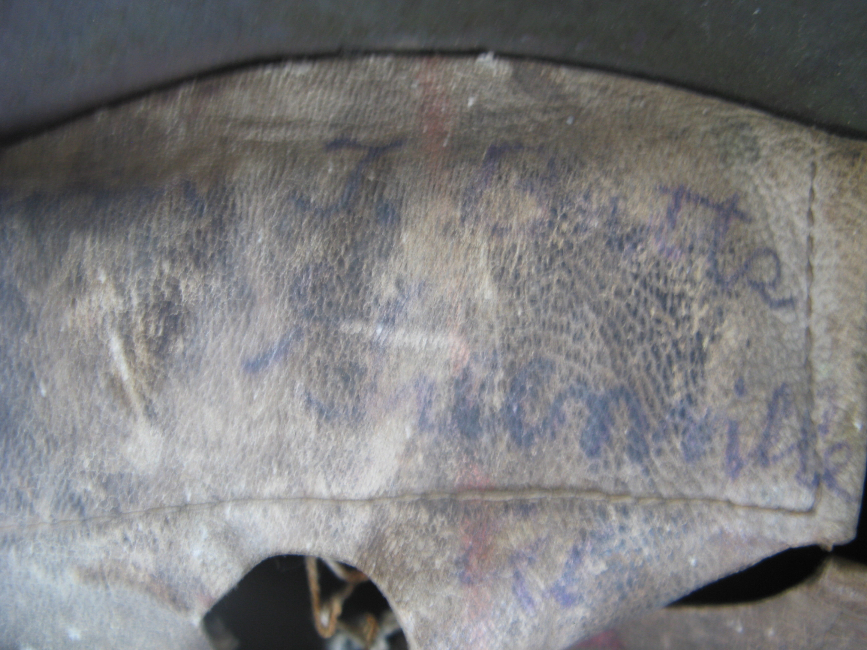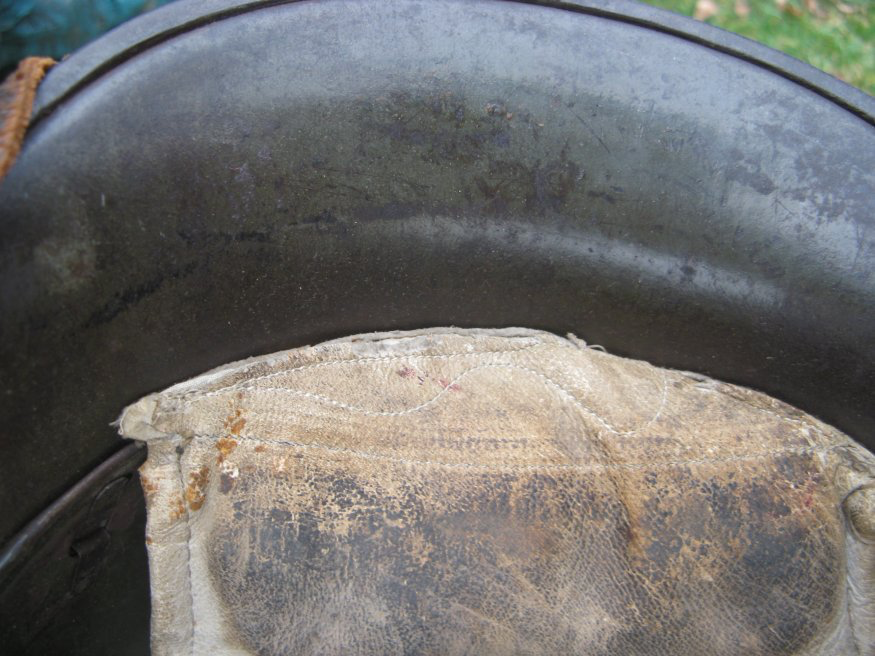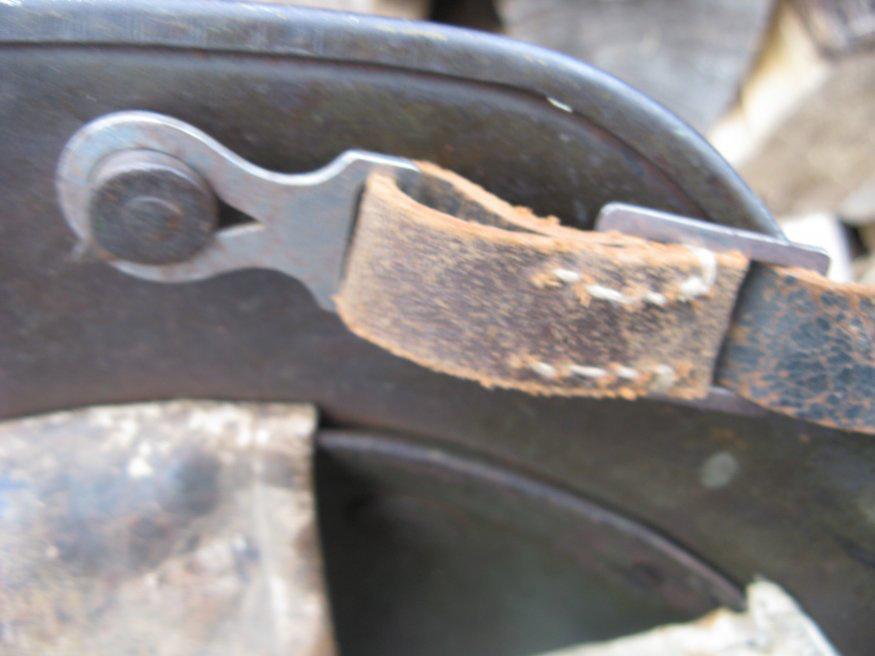1
/
of
11
Medieval & Military Treasures
WW1 German M16 Camouflage Helmet – Rare Splotchy Pattern with Provenance
WW1 German M16 Camouflage Helmet – Rare Splotchy Pattern with Provenance
Regular price
€680,00 EUR
Regular price
€1.600,00 EUR
Sale price
€680,00 EUR
Taxes included.
Shipping calculated at checkout.
Quantity
Couldn't load pickup availability
A truly unique example of a WW1 German M16 Stahlhelm featuring a rarely seen splotchy camouflage pattern. Unlike the more common tortoise shell design that dominates 80% of surviving examples, this helmet showcases a distinctive, irregular paint scheme. The individuality of the pattern suggests it was field-applied by an officer, reinforced by an inscription once visible on the liner.
Adding to its importance, the helmet comes with remarkable provenance, including handwritten documentation from the 1950s and a direct ownership line through a Kentucky family.
Key Features
- Model: M16 Stahlhelm (WW1 German combat helmet)
- Camouflage: Splotchy hand-painted pattern (rare, ~20% of surviving camo examples)
- Inscription: Original soldier’s inscription inside liner (partially legible, ~60% today)
- Documentation: Handwritten cardboard note from the 1950s by the Sheriff’s mother, transcribing the liner inscription when it was fully visible
- Provenance: Private purchase directly from a Kentucky Sheriff; family owned since the early 1960s when it was traded for a pellet gun
- Liner: Period leather, consistent with pre-1917 vegetable-tanned honey brown hue (M16 spec)
Collector’s Analysis
- Camo Rarity: The irregular splotchy style is encountered far less often than the tortoise shell camo, making this helmet stand out.
- Officer Attribution: The disregard of camouflage regulations and presence of an inscription suggests officer ownership, further enhancing its story.
- Provenance Strength: Documented family history from the 1950s onward, with Sheriff’s testimony and cataloguing notes, provide exceptional traceability.
- Market Desirability: Helmets with rare patterns and strong provenance consistently bring premium value on the collector market.
Historical Context
- In 1916, Germany introduced the Stahlhelm, offering much-improved protection compared to the Pickelhaube.
- By 1917, camouflage orders dictated standardized patterns (often tortoise shell), but officers sometimes customized their helmets in the field.
-
The liner tanning method helps identify model types:
- Pre-1917 = vegetable-tanned honey-brown leather (M16)
- Post-1917 = chromium-tanned white leather (M17)
- M18 = distinct by lack of chinstrap rivets near the rim.
-
- This helmet’s splotchy camo and officer-style inscription tie it to the era of the Argonne Drive of 1918, notably the same offensive in which Sgt. Alvin York fought.
Share
